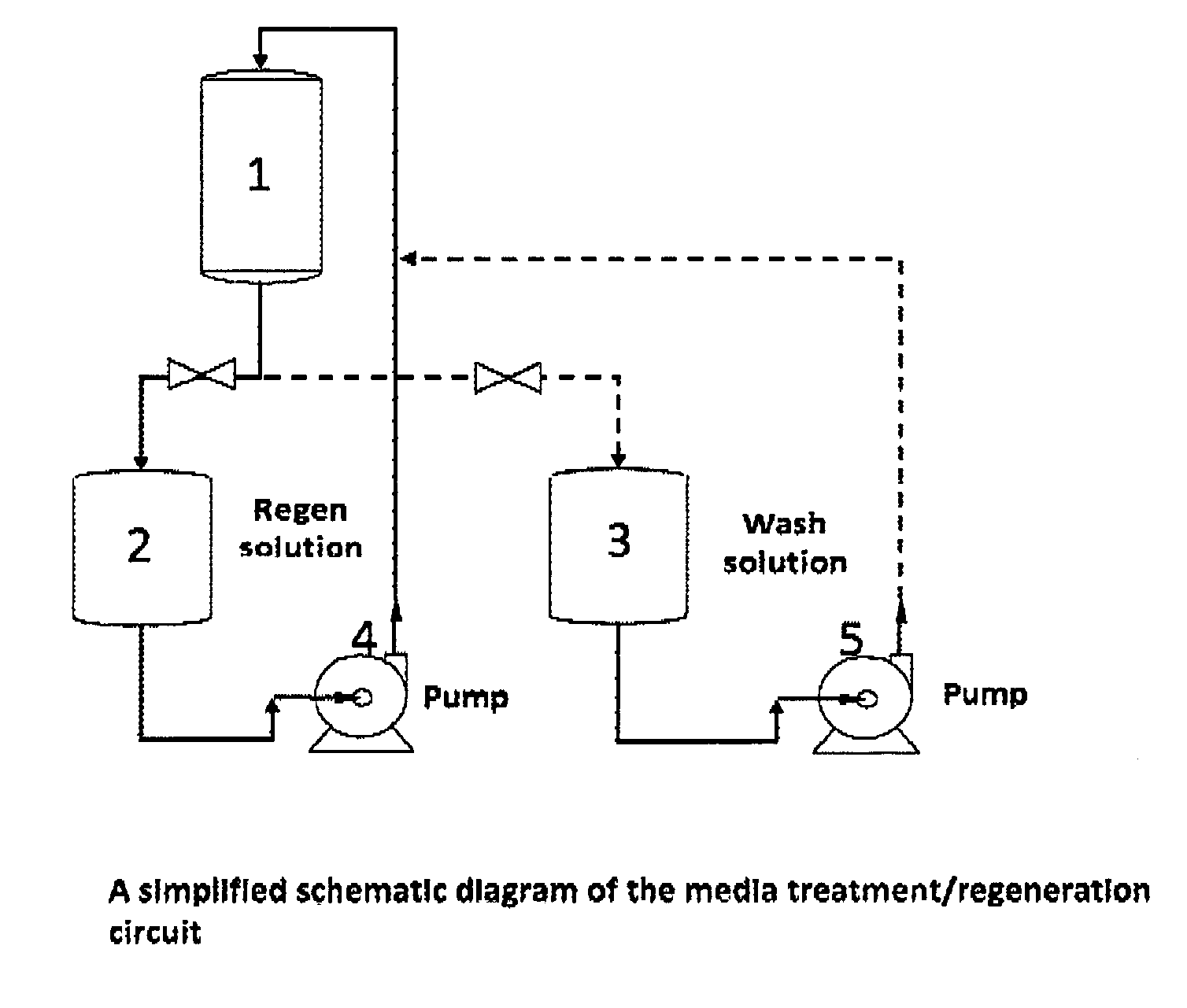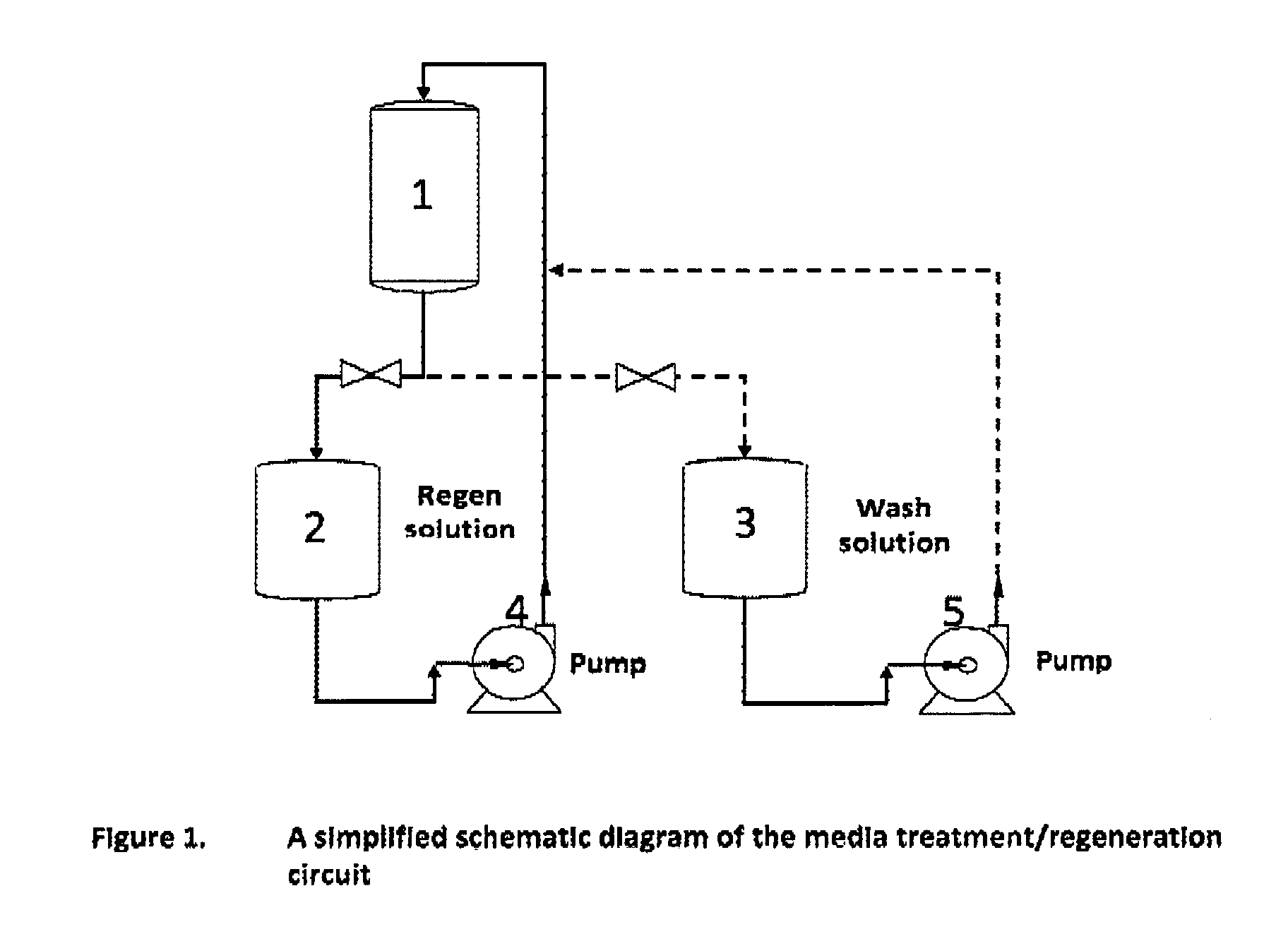Method and Process of Treatment of Selenium Containing Material and Selenium Recovery
a technology of selenium containing material and treatment method, which is applied in the field of treatment method and process of selenium containing material and selenium recovery, can solve the problems of corroding sulfur dioxide gas, not very safe, and both options are expensive and elaborate, and achieves the effects of not requiring highly specialized equipment, high efficiency, and easy implementation
- Summary
- Abstract
- Description
- Claims
- Application Information
AI Technical Summary
Benefits of technology
Problems solved by technology
Method used
Image
Examples
example 1
[0032]100 g of a composite adsorbent, based on iron oxyhydroxides, iron granular, ferrous sulfide, zinc sulfide, alumina, silica and activated carbon, which contained 450 ppm selenium, was reacted with 300 mL of a solution, which contained 0.5 wt % of sodium hydroxide and 0.1 wt % of sodium sulfide solution for 1 hour, then the solids were separated from the liquid phase by filtration, then washed on a filter with 100 mL water. The solids obtained were dried and submitted for total selenium analyses. The total selenium concentration in the solids was 0.2 ppm. The combined filtrate obtained was reacted with 0.2 g of sodium percarbonate to precipitate red solids, which were separated by filtration. The filtrate was recycled for re-use. The solids obtained were identified by SEM / EDX analysis as elemental selenium.
example 2
[0033]500 g of composite adsorbent, based on iron oxyhydroxides, alumina, silica and activated carbon, which contained 350 ppm total selenium, was reacted with 1000 mL of a solution, which contained 3 wt % of sodium hydroxide, for 30 minutes, then the solids were separated from the liquid phase by filtration, washed on a filter with 200 mL of water, dried and submitted for total selenium analysis. The results of the analysis indicated the presence of 0.3 ppm of selenium in the treated solids. To the filtrate obtained, 2 g of thiourea was added, the pH was reduced to 6.7 to precipitate red solids, which were separated by filtration. The filtrate was recycled for re-use. The solids obtained were identified by SEM / EDX analysis as elemental selenium.
example 3
[0034]The adsorbent (100 g) based on iron oxyhydroxides, alumina, silica and activated carbon, in a suitable glass column equipped with inlet and outlet, which contained 600 mg of total selenium, was reacted with 300 mL of solution, which contained 1 wt % of sodium hydroxide and which was circulated through the column at a flowrate 200 mL / min for 20 minutes using a peristaltic pump. After twenty minutes, the circulation was stopped, the column was washed with 100 mL of water. The concentration of selenium in the sample of the column material after the treatment was 0.15 ppm. The eluate solutions obtained were combined. Then 1 g of thiourea was added to the solution and the pH was adjusted to 6.7 to obtain a red precipitate. The precipitate was separated by filtration, washed and dried. The liquid phase was recycled for re-use. The precipitate obtained was identified by SEM / EDX analysis as selenium. The regenerated adsorbent was re-used for water treatment.
PUM
| Property | Measurement | Unit |
|---|---|---|
| concentration | aaaaa | aaaaa |
| wt % | aaaaa | aaaaa |
| wt % | aaaaa | aaaaa |
Abstract
Description
Claims
Application Information
 Login to View More
Login to View More - R&D
- Intellectual Property
- Life Sciences
- Materials
- Tech Scout
- Unparalleled Data Quality
- Higher Quality Content
- 60% Fewer Hallucinations
Browse by: Latest US Patents, China's latest patents, Technical Efficacy Thesaurus, Application Domain, Technology Topic, Popular Technical Reports.
© 2025 PatSnap. All rights reserved.Legal|Privacy policy|Modern Slavery Act Transparency Statement|Sitemap|About US| Contact US: help@patsnap.com


